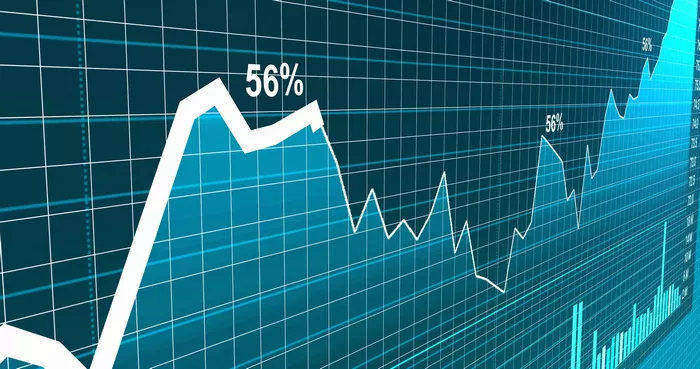In the realm of financial markets, futures play a pivotal role in determining price trends and investor sentiment. When futures prices experience a downturn, it triggers a cascade of reactions across various sectors, impacting not just traders but also the broader economy. This article delves into the underlying reasons why futures may decline, exploring both fundamental and market-driven factors that contribute to these fluctuations.
Fundamental Factors Influencing Futures Decline
At the core of futures trading lie fundamental economic principles that dictate supply, demand, and the broader economic environment. Several key factors can exert downward pressure on futures prices:
Supply Surplus and Demand Weaknesses: One of the most fundamental reasons for a decline in futures prices is an oversupply of the underlying asset or a decrease in demand. This imbalance can arise due to various factors such as changes in consumer preferences, technological advancements, or shifts in global production capabilities. For instance, a sudden increase in oil production coupled with stagnant demand growth can lead to a decline in crude oil futures.
Economic Contractions: Periods of economic slowdown or recession often lead to reduced consumer spending and business investments. This downturn in economic activity can directly impact futures prices across multiple asset classes. During economic contractions, commodities like metals, agricultural products, and industrial materials tend to see decreased demand forecasts, thereby pushing futures prices downward.
Interest Rate Fluctuations: Monetary policy decisions, particularly changes in interest rates by central banks, can significantly influence futures markets. Higher interest rates typically lead to increased borrowing costs, which can dampen consumer spending and business investments. This, in turn, can lower demand expectations for commodities and other assets, exerting downward pressure on their respective futures prices.
Geopolitical Events and Global Uncertainty: Political instability, trade tensions, and geopolitical conflicts can create uncertainty in global markets. Such events can disrupt supply chains, affect investor confidence, and lead to heightened market volatility. In times of geopolitical uncertainty, investors often seek safer assets, causing a flight from riskier futures contracts and contributing to their decline.
Market-Driven Dynamics Contributing to Futures Decline
Apart from fundamental factors, market-driven dynamics also play a crucial role in shaping futures prices. These factors are often influenced by investor behavior, market sentiment, and technical indicators:
Speculative Trading and Sentiment Shifts: Futures markets are heavily influenced by speculative trading activities. When sentiment shifts due to changes in economic data, corporate earnings reports, or even rumors, it can trigger a wave of buying or selling. If sentiment turns negative, investors may liquidate their futures positions, leading to a decline in prices.
Margin Calls and Forced Liquidations: Futures trading involves leverage, where investors only need to deposit a fraction of the contract’s total value (margin). If the market moves against them, investors may face margin calls, requiring additional funds to maintain their positions. Failure to meet margin requirements can result in forced liquidation of futures contracts, contributing to downward price movements.
Technical Analysis and Market Trends: Technical analysts study historical price patterns and trading volumes to forecast future price movements. When key technical levels, such as support levels or moving averages, are breached, it can trigger automated selling or buying orders. These technical signals can exacerbate price declines as more traders follow suit based on technical indicators.
Liquidity and Market Depth: The liquidity of futures markets plays a critical role in price discovery and stability. During periods of low liquidity or market stress, it may become difficult to execute large orders without significantly impacting prices. This lack of liquidity can amplify price movements, leading to sharper declines in futures prices.
See Also:What Is Futures Trading?
Case Studies and Real-World Examples
To illustrate the complexities of futures market declines, examining specific case studies and recent examples provides valuable insights:
Oil Futures During Supply Glut: In 2014-2016, the global oil market experienced a significant supply glut due to increased production from non-OPEC countries, particularly shale oil producers in the United States. This oversupply drove oil prices sharply lower, causing corresponding declines in oil futures contracts.
Agricultural Commodities Amid Trade Tariffs: The imposition of trade tariffs between major agricultural exporters and importers, such as the United States and China, led to reduced demand forecasts for crops like soybeans and wheat. As a result, futures prices for these commodities faced downward pressure due to anticipated lower export volumes.
Interest Rate Hikes and Bond Futures: Central bank actions, such as the Federal Reserve’s interest rate hikes in 2018, contributed to declines in bond futures prices. Higher interest rates increased borrowing costs and reduced bond prices, reflecting expectations of lower bond yields in the future.
Strategies for Managing Futures Declines
For investors and traders navigating futures markets, understanding how to manage and mitigate risks during price declines is crucial. Several strategies can help:
Diversification: Spreading investments across different asset classes and regions can reduce exposure to specific futures contracts and mitigate the impact of declines in any single market.
Risk Management: Setting stop-loss orders and maintaining sufficient margin levels can help limit potential losses during volatile market conditions or unexpected price declines.
Research and Analysis: Conducting thorough fundamental and technical analysis can provide insights into market trends and potential catalysts for price movements, enabling informed trading decisions.
Hedging Strategies: Using futures contracts to hedge against adverse price movements in related markets or portfolios can protect against downside risk and stabilize overall investment returns.
Conclusion
In conclusion, the factors contributing to declines in futures prices are multifaceted, encompassing both fundamental economic dynamics and market-driven forces. By examining these factors and understanding their interplay, investors can better navigate futures markets and effectively manage risks associated with price declines. While market volatility and uncertainty are inevitable, a disciplined approach to research, risk management, and strategic decision-making can empower investors to capitalize on opportunities and safeguard against potential losses in futures trading.


